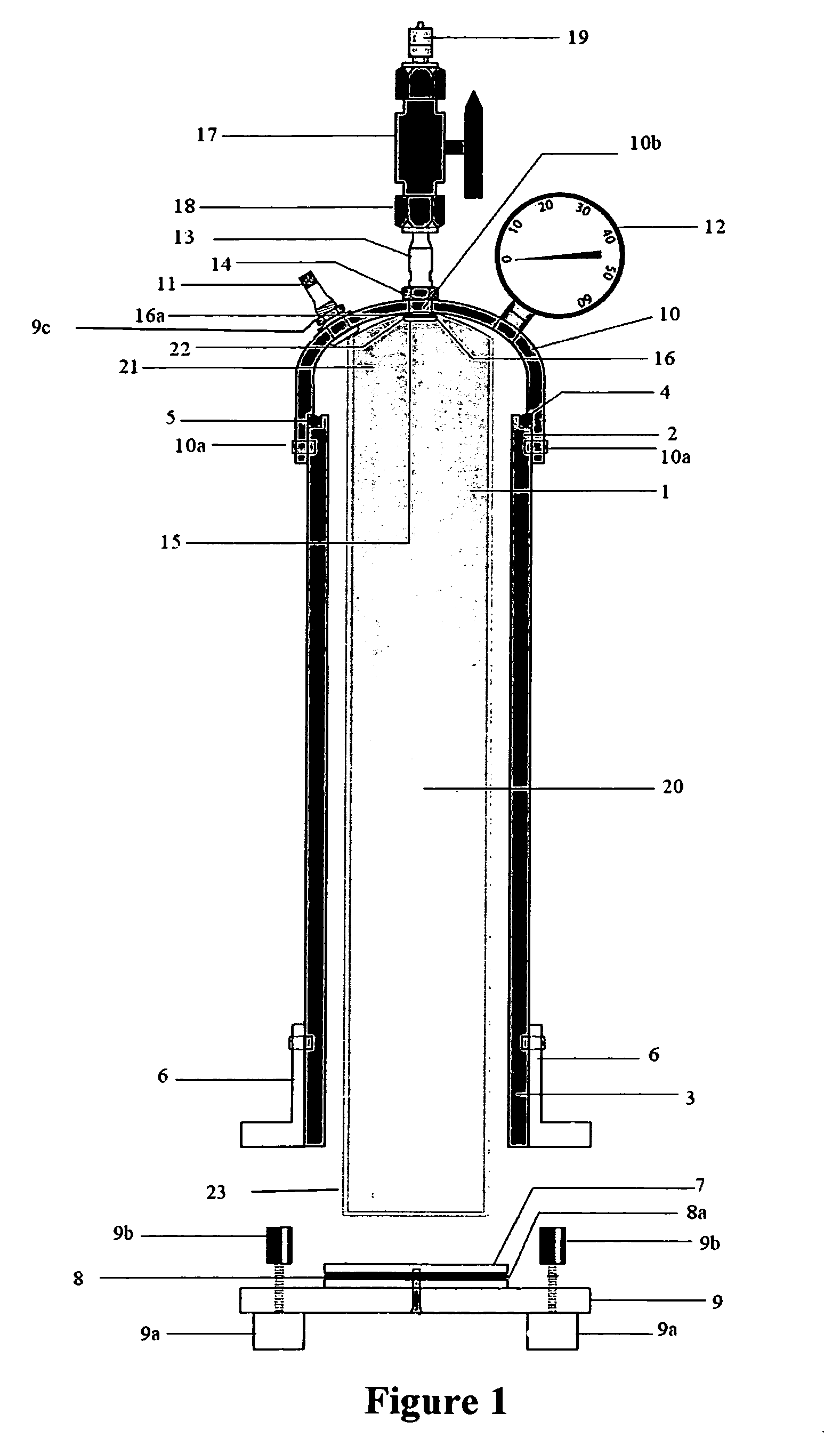Low dead-volume core-degassing apparatus
a core-degassing apparatus, low-volume technology, applied in the direction of instruments, testing water, withdrawing sample devices, etc., can solve the problems of core-degassing canisters, relatively expensive, and heavy weigh
- Summary
- Abstract
- Description
- Claims
- Application Information
AI Technical Summary
Benefits of technology
Problems solved by technology
Method used
Image
Examples
Embodiment Construction
[0021]FIG. 1 illustrates the four main components of the core degassing apparatus. Body 1 exhibits first body end 2 and second body end 3. First body end 2 exhibits body gasket seat 4 which is machined from the tubular circumference of first body end 2 forming a lip upon which body gasket 5 rests. Second body end 3 is inserted and fixed within circular flange 6. Sealing disk 7 is designed to be of such a diameter that it fits within second body end 3. Disk o-ring seat 8 is machined into the edge of sealing disk 7 and provides a recess where disk o-ring 8a is inserted into disk o-ring seat 8a. Sealing disk 7 may be inserted within second body end 3 creating an air tight seal for body 1. Sealing disk 7 is attached to base disk 9. Base disk 9 may exhibit a plurality of feet 9a as well as a plurality of screws 9b which are inserted through corresponding apertures in flange 6. A plurality of nuts 9c are then threaded over screws 9b thus securing base disk 9 and sealing disk 7 respectivel...
PUM
| Property | Measurement | Unit |
|---|---|---|
| diameter | aaaaa | aaaaa |
| shape | aaaaa | aaaaa |
| non-permeable | aaaaa | aaaaa |
Abstract
Description
Claims
Application Information
 Login to View More
Login to View More - R&D
- Intellectual Property
- Life Sciences
- Materials
- Tech Scout
- Unparalleled Data Quality
- Higher Quality Content
- 60% Fewer Hallucinations
Browse by: Latest US Patents, China's latest patents, Technical Efficacy Thesaurus, Application Domain, Technology Topic, Popular Technical Reports.
© 2025 PatSnap. All rights reserved.Legal|Privacy policy|Modern Slavery Act Transparency Statement|Sitemap|About US| Contact US: help@patsnap.com



